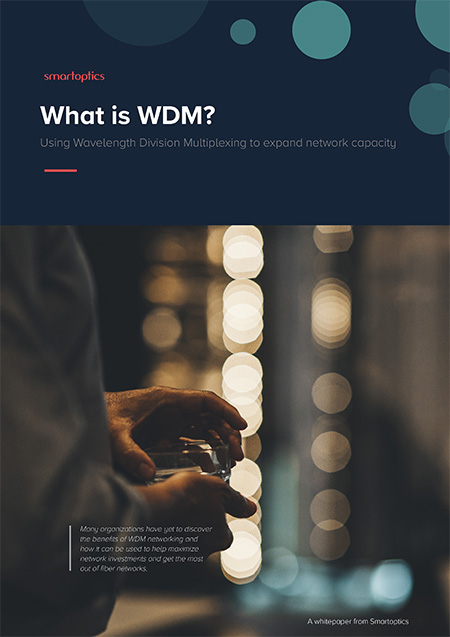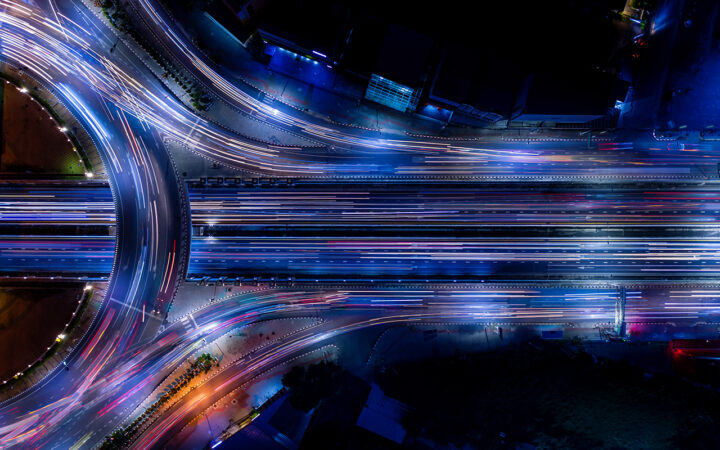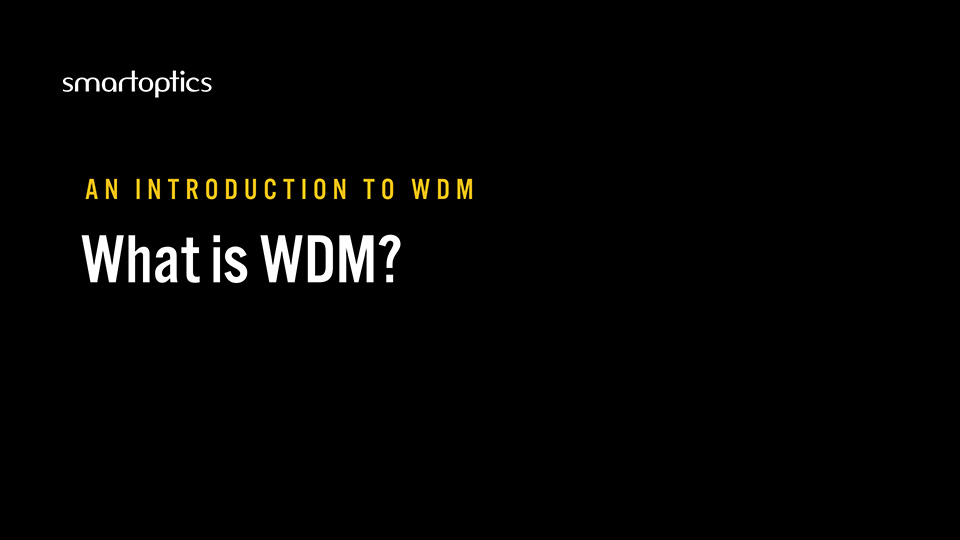What is DWDM and when should you use it?
The connected society now taking shape depends on robust and future-proof networking solutions for a range of fiber optic network applications – from corporate and governmental data centers to service provider networks. DWDM is increasingly a key ingredient in the fiber optic network puzzle of today and tomorrow. You may have heard of DWDM among the vast sea of networking terms, buzzwords and abbreviations and wondered what it really means.
Perhaps you’ve heard a few years back that CWDM was cheaper and good enough. Or, are you worried that building your optical DWDM network the wrong way could box you into a corner and force you into new investments within a short period of time to not be left in the dust?
This blog post will shed light on what DWDM is and what the benefits of DWDM are so you can make smart decisions for designing, deploying and upgrading your network.
What is DWDM?
DWDM stands for Dense Wavelength Division Multiplexing, a fiber optics technology for connecting multiple channels over a dark fiber pair using a multiplexer. This way, it maximizes fiber usage and help organizations meet growing demands without laying or leasing more fiber until it’s absolutely necessary. With DWDM, all multiplexed channels are in the 1550nm wavelength region, the range with the lowest loss, with only 0.8nm in space between them.
By default, DWDM has around 40 channels at 100G speeds. However, an interleaver can double the number of channels by cutting the speed in half. An interleaver multiplexes 50GHz-spaced DWDM signals onto a 100GHz-spaced channel plan. The 50 and 100GHz signals are commonly referred to as odd and even signals, and it is these signals that are combined or interleaved together typically to move from 40 to 80 channels at 50G.
The difference between CWDM and DWDM
Both dense WDM (DWDM) and coarse WDM (CWDM) can transmit any mix of data on multiple channels over a single dark fiber. Collectively, CWDM and DWDM are commonly referred to as xWDM.
The main difference between the CWDM and DWDM technologies is how the channels are spaced along the electromagnetic spectrum. While DWDM wavelengths are typically 0.8 nm apart, CWDM wavelengths are 20 nm apart. As a result, CWDM is limited to a maximum of 18 channels. DWDM signals can also be amplified, which enables them to transmit data over much farther distances.
Active or passive DWDM systems – what’s the difference?
DWDM (as well as CWDM) solutions are available as active or passive systems.
In a passive, unpowered solution the DWDM transceiver resides directly in the data switch. The output from the DWDM transceiver connects to an unpowered multiplexer that combines and redistributes, multiplexes and demultiplexes, the various signals. As the DWDM transceiver resides in the data switch, it means that all DWDM functionality is embedded in the data switch.
Active DWDM solutions are stand-alone AC or DC powered systems separated from the switch. The task of the stand-alone system is to take the short-range optical output signal of the fiber or IP switch and convert it to a long-range DWDM signal. This OEO, (optical to electrical to optical), conversion is handled by a transponder. The converted DWDM signal is then transmitted with the help of transceivers and multiplexers. Due to the separation of the DWDM transport solution from the actual switch, active systems have traditionally tended to be more complex than passive, embedded solutions.
Is DWDM cost-effective?
While CWDM used to be considered the better budget option, at least in the enterprise DCI environment, DWDM has dropped in price over time and is now hardly more expensive than CWDM. At the same time, DWDM is capable of far higher speeds over longer distances and can better support future technologies. Because they are limited to transporting lower speed traffic over distances of up to 70 km, CWDM networks are liable to become obsolete sooner rather than later. As a result, there should now be little doubt that DWDM delivers better ROI in all greenfield installations.
Is DWDM future-proof?
Corporate and governmental data center operators as well as service providers are increasingly concerned about how future-proof their solutions are. For instance, increasingly many are looking to upgrade to 100G today while also not wanting to miss out on 400G tomorrow.
Regardless whether you need to transmit data at faster speeds over longer distances now or later, you’re bound to need to eventually. Unamplified DWDM typically reach up to 80km, but the signal can be amplified to support distances above 1500km. In addition, DWDM supports all current and upcoming speed protocols, such as 100G and 400G, making it a far more future-proof technology than CWDM.
Learn about other technologies that go hand in hand with DWDM
A DWDM solution is not the only part of your network, but by choosing DWDM, at least that’s one part you won’t have to worry about later when looking into upgrades down the road. Read more about the other key components of an optical xWDM network, how DWDM interacts with these components and how DWDM fits into the big picture of tomorrow’s connectivity.
Smartoptics provides innovative optical networking solutions and devices for the new era of open networking based on DWDM. We focus on solving network challenges and increasing the competitiveness of our customers. Our customer base includes thousands of enterprises, governments, cloud providers, Internet exchanges as well as cable and telecom operators.


Related articles

What is a SAN ( Storage Area Network) and how does it protect mission-critical workloads?

What is Fibre Channel used for?

